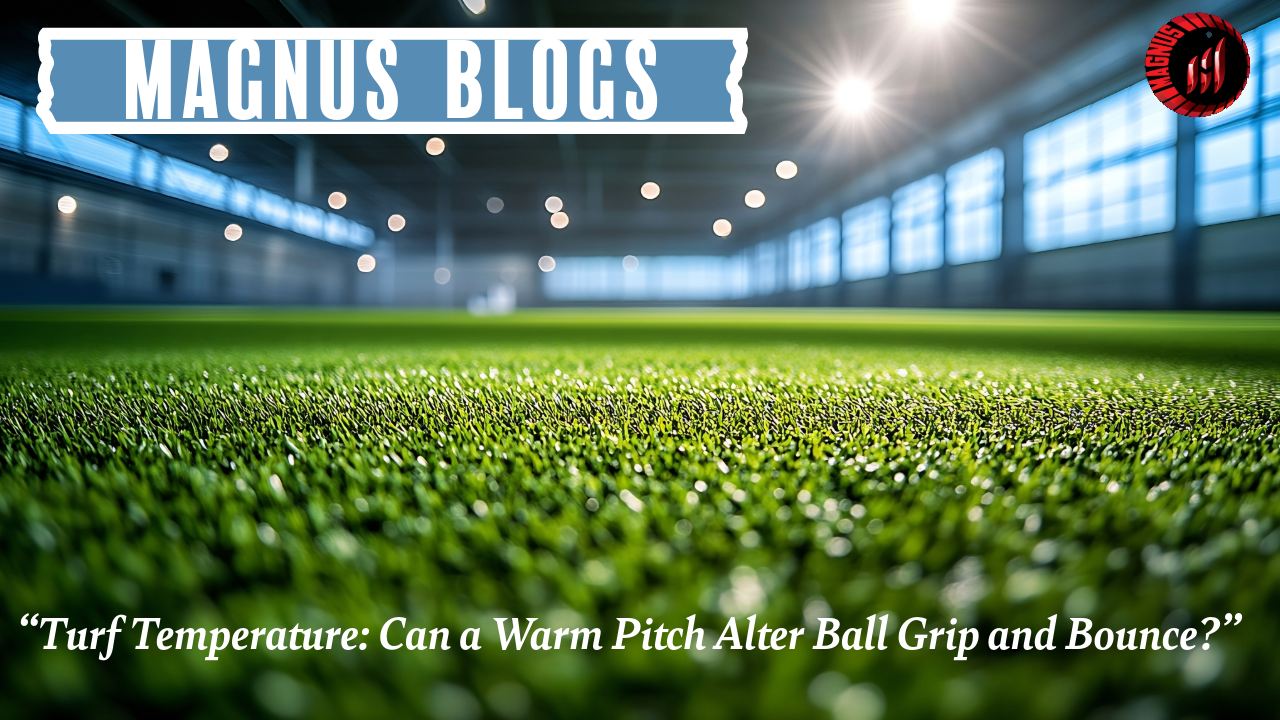Cricketers often talk about how a pitch behaves — turning square, keeping low, or offering bounce. But there’s a less discussed factor lurking beneath the surface: temperature.
Could the heat of the turf itself influence how the ball grips or bounces? In this blog, we dig into the science and match-day realities of how turf temperature affects cricket pitches — and what it means for spinners, pacers, and batters alike.
What Exactly Is Turf Temperature?
Turf temperature refers to the surface-level warmth of the cricket pitch, typically influenced by:
-
Direct sunlight
-
Ambient air temperature
-
Soil composition and moisture retention
-
Time of day and season
Unlike air temperature, turf temperature affects the physical properties of both the soil and the grass, which directly impacts the behavior of the ball.
How Does Heat Change the Pitch?
Let’s break down the main effects of heat on turf:
1. Drying Out the Surface Faster
On a hot day, moisture evaporates more rapidly. This leads to:
-
Harder, cracked pitches — which can help spinners
-
Reduced seam movement — as there’s less moisture to grip
-
A more abrasive surface, potentially reversing the ball faster
2. Making the Pitch Bouncier or Softer
Contrary to belief, not all heat increases bounce. It depends on the pitch type:
-
On dry clay-heavy soil, high heat makes the surface harder, increasing bounce.
-
On loamy or poorly prepared pitches, excessive heat without moisture can cause softness and cracks, leading to variable bounce.
3. Altering Ball Grip
Spinners rely on grip. When turf is warm and dry:
-
The ball grips better and turns more on cracked or dusty surfaces.
-
However, too much heat can cause loose top layers, reducing predictability and making turn inconsistent.
For pacers, heat may flatten the seam over time, decreasing grip — especially on abrasive, hot decks.
Real-Match Scenarios: How Players Adapt
-
Spinners in India often come alive post-lunch, as rising heat breaks down the surface.
-
Fast bowlers in Australia bowl shorter on warm, bouncy Gabba decks, which firm up through the day.
-
In cooler climates, early morning sessions offer seamers more grip due to retained surface moisture.
-
Batters adjust footwork: using the crease more on hot days to handle variable bounce caused by cracking turf.
What About Artificial Turf or Mats?
While natural soil reacts to heat dynamically, artificial surfaces (like astroturf or matting) also heat up — sometimes even more quickly — and this can:
-
Speed up the pitch considerably
-
Soften certain synthetic layers, affecting ball bounce
-
Impact player comfort due to radiant heat from the surface
Pitch Curators: The Hidden Influencers
Groundskeepers monitor turf temperature closely. They manage it using:
-
Watering schedules to retain moisture
-
Rolling techniques to compact or loosen the surface
-
Shade covers or tarps to prevent over-drying
Their goal is to strike the right moisture-heat balance — critical for match fairness and consistency.
Can Turf Temperature Be Measured?
Yes — professionals use:
-
Infrared thermometers to get instant surface readings
-
Soil moisture meters to assess how heat is affecting below the surface
-
Thermal cameras in high-performance setups to visualize temperature zones
These tools are now part of pitch preparation, especially at international level venues.
Turf temperature isn’t just a background detail — it’s a living part of pitch behavior. A warm surface can completely shift the game’s rhythm, affecting how the ball bounces, grips, spins, or skids.
Players who understand this subtle science gain a hidden advantage. So the next time you walk out to bat or bowl, don’t just look at the pitch — feel the heat beneath your feet. It might be telling you exactly what to expect.
Cricket bat types, Cricket equipment in usa, Cricket equipment store, Cricket gloves, Cricket helmet, Cricket kit bags, Cricket retailers, Durable cricket gloves, English willow bats, Icc approved helmets., Kashmir willow cricket bat, Latest kashmir willow bat
